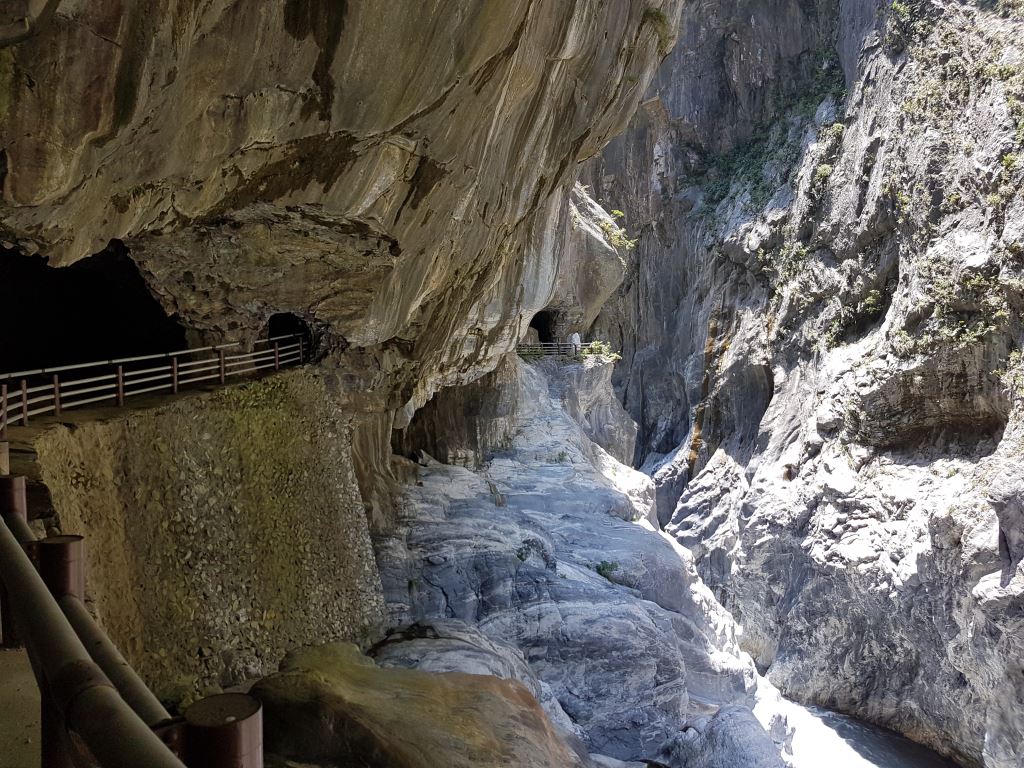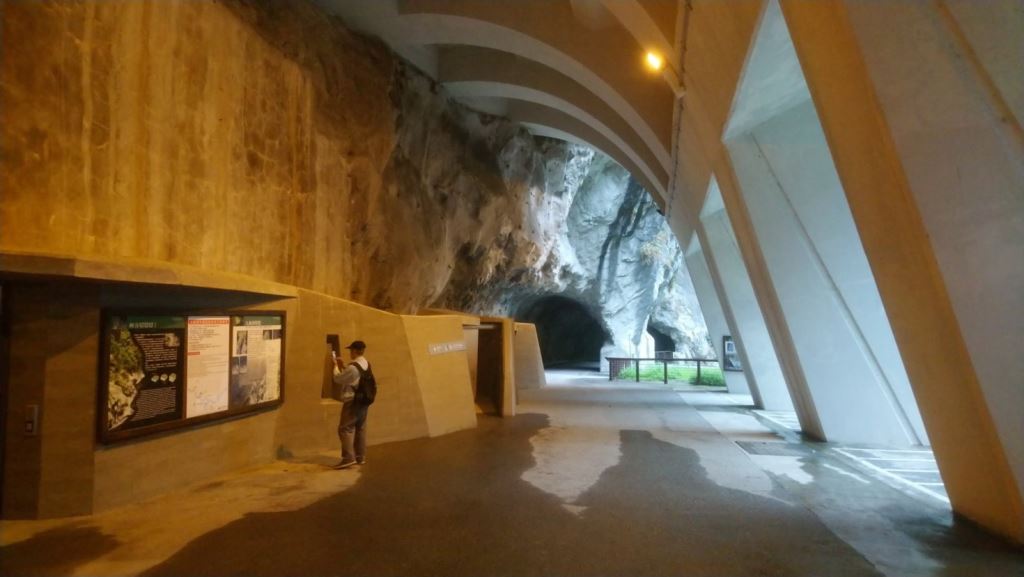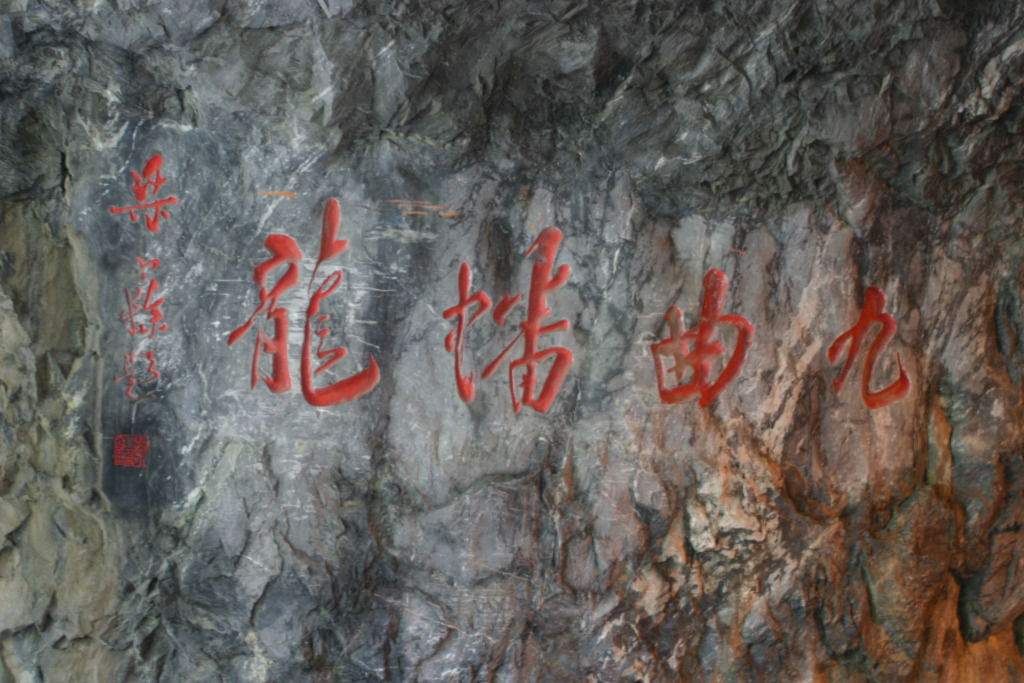Trail Introduction
The Tunnel of Nine Turns (Jiuqudong) is considered one of the most scenic sections of Taroko Gorge. The number nine in Chinese—implying "many"—is heavily used in the Chinese language. The trail itself is 700 m one-way in length, and visitors enter and exit from the West entrance. The Tunnel of Nine Turns meanders high along the mountains, where visitors can experience an impressive view of the Liwu River from an imposing height. Here, the narrow Gorge with its steep sides close to each other presents a thrilling, majestic landscape.
On a smaller scale, visitors can closely observe the faults, folds, and layering of the marble walls of the Gorge canyon, in addition to the vegetation that grows on its steep walls. Being a flat yet wide recreational trail, the Tunnel of Nine Turns is a popular and ideal outdoor educational classroom for all ages.
History
Before the opening of the Tunnel of Nine Turns (Jiuqudong) Tunnel in 1996, the Tunnel of Nine Turns was part of the Central Cross-Island Highway (Provincial Highway 8). This section of the Old Highway was subsequently converted to a trail through the construction of facilities and safety features. Remnants of the Old Highway are still visible, especially in the central section of the trail where the original stone tunnel that penetrates the mountain walls are still intact. Here, the manual labor that was required to pick out the hard marble is especially evident. In addition, during the Japanese Occupation of Taiwan (1895 – 1945), gold mining access roads were constructed over the rock walls on the outer face of the trail; these narrow paths are still visible today.
Geology
Numerous faults—cracks in the rocks extending upwards of the mountain walls—can be found at the entrance of the trail. Faults are often caused by the orogenic movement of the tectonic plates underneath the Earth surface. Due to the high seismic activity on the eastern coast of Taiwan, faults can be easily spotted within Taroko National Park.

The Tunnel of Nine Turns (Jiuqudong) Trail
Stop 1: Trail Entrance
The trail entrance is located at the west entrance of the Tunnel of Nine Turns (Jiuqudong) Tunnel and is where visitors alight from both public and private transport, the exact locations marked with signs. Public restrooms are also available at the trail entrance. The newly-built Ming Tunnel (rockfall prevention tunnel) provides visitors and vehicles with extra safety reinforcements while simultaneously taking into account the surrounding scenery.

Tunnel of Nine Turns (Jiuqudong) Trail Entrance
Stop 2: Waterscape (Shuijing) Trail
200 m from the trail entrance, the trail descends closer to the valley, leading visitors down into the Gorge. Here, visitors can experience the sounds and the erosive power of the turbulent Liwu River.
Stop 3: Fish Leaping over the Dragon's Gate (Yuyao Longmen)
Opposite the Tunnel of Nine Turns is a small waterfall that cascades into the Liwu River. The steep stream of water continually erodes the marble walls of the gorge, creating a curved and narrow ravine. The huge marble on one side of the ravine resembles a big fish leaping over the stream, hence its name "Fish Leaping over the Dragon's Gate".
The stream flowing through the ravine is called the Kelan River, which, over the years, has cut through the marble wall and arcs into the Liwu River. Indeed, it resembles a miniature version of the Taroko Gorge. Eventually, through many more years of erosion, another marble gorge will be formed.
Stop 4: Coiled Dragon of the Nine Turns (Jiuqu Panlong)
A quatrain by Mt. Liang Hanchao "Coiled Dragon the Nine Turns" is inscribed in the rock at the midpoint of the Trail between two tunnels. On the west side, visitors can enjoy the views overlooking the Gorge, while the narrowest section of the Gorge is situated eastwards. Here, the rock walls seem to close in on the trail, giving the illusion of being able to reach out and touch the opposite wall. The narrow terrain also lends itself to strong, windy updrafts in this area.
In addition to "Coiled Dragon of Nine Turns" poem, there is inscribed another quatrain by General Huang Jie:
Like entrails turning,
Like rivers bending,
Man will succeed
by starting their first play.
Besides the Tunnel of Nine Turns, numerous other poems are inscribed into the walls of the Central Cross-Island Highway, collectively representing the cultural heritage of Taroko Gorge.

"Coiled dragon of the nine turns"
Stop 5: Trail end (returning point)
At the end of the 700 m trail, visitors will need to turn back and exit the trail by the same route back to the trailhead.